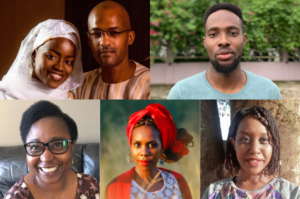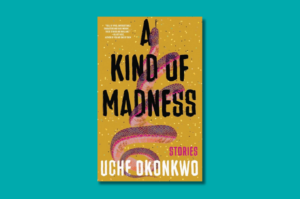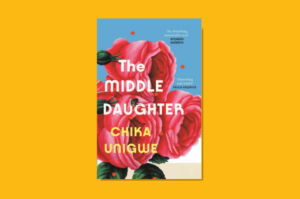
What seems to be the general idea in this 12th ANA Review volume, edited by Nigerian poet and essayist, Obari Gomba, is that Nigerian literature has “come of age,” following its long existence within the context of Western cultural spaces. Now in its 43rd year, the Association of Nigerian Authors has sheltered a large bowl of writers from the country.
Forming the association was a brave and decisive move, especially considering that its founder, the globally revered Chinua Achebe, had just published, only four years before, his influential text, An Image of Africa: Racism in Conrad’s Heart of Darkness, where he advocated for the postcolonial argument concerning the largely unfriendly nature of Europe and its lack of faith in African thought. As is expected, the work gained a controversial mist in the western sector. Invoking Joseph Conrad’s Heart of Darkness, Achebe argued that Europe should be more open to taking the viewpoint of colonised nations. New beginnings often emerge from this stark darkness.
In his essay, “Groundbreaking Exploration of the Birthplace of Writing,” Sumaila Isah Umaisha reviews Black Papyrus, the work of Al Bishak. Umaisha comments that Black Papyrus is “a protest against the widely accepted lies about Africa” (203). The arguments he brings are hardly new, however important they are. What form has these lies taken in contemporary Nigerian literature? How far off are its writers from the postcolonial glow? Cultural politics has now necessitated flight away from home in Africa to those places in the west with organised systems. With this exeunt comes the unhomeliness, and feeling of guillotining from home, history and self.
Gomba’s essay, “The Immanence of the Nation,” argues around Homi Bhabha’s critical discourse on DissemiNation as a tool for speaking against what we have lost as a continent, as well as the many things we have gained from existing as cultural hybrids. Although the 20th entry in the book, The Immanence captures much of the issues in postcolonial Nigerian literature, especially counter narratives by the colonised. Gomba expresses the thinking that, “The experiences of nations create timeless narratives.” Why Gomba’s essay and postcolonial theory are important for Nigerian writers in particular, is that it questions what is at the other side of what should or could be.
The succeeding colonial leadership proved to be as oppressive as the experience of living within the colony. What with the coups and countercoups in Nigeria after the gaining of independence, Nigeria showed its incapacity to carry itself. Nigerian poets shake the beehive using their poems as a path of revolt. Uchechukwu Peter Umezurike’s essay, “Land of Cemetery,” addresses Achilles Mbembe’s necropolitics vis-à-vis the Nigerian state. Umezurike argues that, “The issues that provoked the trope of protest in much of the poetry published in Nigeria between the mid-eighties and late nineties are still present” (97). The good news then is that Nigerian literature still reeks of its humus even though much of its central poetics have been tampered with, as it were, by migration and consequently western creative tropes. It is hardly a sad reality, in the main. Nations have barely survived as culturally insular totems. Tanure Ojaide’s narrator in “Shapeshifters” exclaims, “I travel and come back to see friends who have become tortoises” (7).
Achalugo Chioma Ilozumba’s brilliant short fiction, “Uber for Dead Bodies,” targets African spirituality and the influence of colonialism on African religious beliefs. Ilozumba’s crafty recollection of the largely demonised spiritual practice of clairvoyance is a straight arrow to the existence of its power, setting up a confluence between neocolonialism and African trado-spiritual worldview. Broda Patrick represents the soul straddling in the midsection of history and identity, and close to the end of the story, Maami Seyia describes him as “You who is being followed by your ancestors for not heeding their call” (20).
In the same way, Oyindamola Margaret Abodunrin presents a compelling case of postcolonial misidentity in her poem, “Twenties.” Viewed through the lens of a bildungsroman, the young narrator grows into the later years of reality, where there is a harsh collision of conflicting ideas. The narrator says, “The battle isn’t against the world / But against the tragedy of disbelieving one’s self” (35). The poet persona lies in the fearful in-between.
It is this cultural and historic indeterminacy that hinders real progress for those in the cultural margins. In Chimankpa A. G. Ogbueri’s compelling poem, “Blood Pressure,” there is the familiar taste of aporia and indeterminacy. “There is this traffic light inside my head. It is always buzzing green but never red,” the narrator says. Ogbueri stands in the fearful in-between, uncertain about progress or retreat. There is a frightful light at the end of the tunnel, and the narrator exclaims, “I am afraid that one day, / it will turn red” (25). The play on kinesthetics through the reference to “traffic” is effective. It advises on humanity’s obligation to move, to explore, to be destroyed.
Olubunmi Familoni’s one-act play, What Does Half a Rebirth Weigh?, is reminiscent of Yoruba mythology through its reference to Oritameta Oke, the mythical “junction where the journeys of the beginning and the end of life meet” (26). At this famed junction, the fate of people is decided, and bodies come and are ferried away to earth. The play incorporates justice and recompense at the hand of Agba, the Lord Almighty. The Christian God is besmirched as false. At once, Familoni, like Ilozumba, denounces the colonial construct of spirituality.
Jude Idada’s short story, “The Housemate,” is a classic tale of indecision rummaging through the unhealthy relationship between two homosexual lovers. In a sense, the story informs on the permission, as it were, that western pop culture has given African writers to expose the hitherto forbidden stories of closeted lives. The uncertainty of the “friend” flowers into a concrete need to cauterise “the hidden love that once was and had promised to live forever” (52).
Olaitan Lilian Sanya-Abiodun’s narrator in “Hosts” praises nature’s beauty. The sun, stars, moonlight, winds, water and earth. The poet persona says, “I love the curious ways of water” (53). Still, there’s that gritty, kinaesthetic feel. The earth, the narrator alludes, is a “dusty path every life must tread.” The poem is a joyful testimony to the mandatory process of movement by both the colony and the colonised. It is the general flavour of such fully formed literature: the ability to navigate and imbricate space.
The conflict of Iquo DianaAbasi’s “Idara ye Uko” is the love between two young lovers, and the reluctance of Uko to let Idara settle with Sammy. Through Sammy, DianaAbasi reminisces on the 2020 toll gate massacre, orchestrated through members of the Special Anti-Robbery Squad, where Sammy belongs. In “Idara ye Uko,” much as in Amarachukwu Chimeka’s “How to Snatch a Man from His Wife — A Practical Guide to the Side Chick Codes,” DianaAbasi admits to the wide-ranging power of love. In Chimeka’s quasi comedic short fiction, however, the protagonist, Nkolika, falls at the wrong end of love after she loses her child.
Jide Badmus’s poem, “The Boolean Factor,” ends with the instructive lines: “Remember: no one remains / whole at the end of a war” (63). Badmus’s dazzling poem seems to speak to the postcolonial reality demanding a move from the margin to the global center. The poem taps the Boolean computational logic. The poet observes that, “& sometimes it is only wise to / not go knocking on every door” (62). “The Boolean Factor” moves through time and age, as it were, painting a comparison between the old and the young. Still, even though “Hopes are on steroids,” the Boolean logic may be incorrect, disrupted by the screaming logic of the in-between, the vibrant space between youth and age. This same logic eclipses Emmanuel Frank-Opigo’s poetic insights in “Seven Numbers.” The poet analyses numbers and years, which he believes are “a reckoning that now for us / Proclaims a set of remarkable tours” (181). Frank Opigo traces from birth to death, highlighting achievements we may make along the way. He however notes that the “day of birth” begins “from that singularity / That leads us pell-mell to eternity” (182).
Echezonachukwu Nduka, like Badmus, romanticises time and its corollaries. Nduka’s poem, “Hair,” conscripts the metaphor of hair to mark the passage of time. The persona says, “My overgrown hair is the first warning I see in the mirror / each strand an invitation for judgement” (192). For Nduka, the graying hair patch covers wisdom. He says, “The hair is feared because of whose head / it adorns.”
Su’eddie Vershima Agema’s story, “Shooting Stars,” recounts the violence perpetrated on a village by members of the Nigerian Armed Forces. Like Iquo DianaAbasi’s short story, Agema’s pays homage to his gun-toting, murdering country of birth. From faraway in New York, Bule appeases his personal grief. Bule’s recollection brings Agema’s short story into full throttle and foregrounds the ethics of migration. Bule encapsulates both the departure and the return of the African to the Homeland. Through Bule’s recollection of history, and as Bule stands before the symbolic Statue of Liberty, Agema draws a fitting link between the African migrant and his home.
Bura-Bari Nwilo’s “The Letter” follows the ideas of Obinna Udenwe and Agema, in its statement concerning what may be the debilitating challenges and effect of migration to the west. The ruination of the self is espoused through Uncle Joey. The narrator says that, “As soon as Uncle Joey returned to Nigeria, he turned cold towards everyone” (196). Like Udenwe’s Jeremiah, who is deported from the USA and returns to crime and debt in Nigeria, Uncle Joey comes back as a shadow of his former bubbly self.
Carl Terver’s poem, “For Girl at Rubicon,” continues the proprioceptive metaphor in the book. Terver’s persona awaits the “girl,” who is hesitant to come down from her swing. The “boy,” like the girl, follows the swing of motion, uncertain of the possibility of their romance. He says, “so I / juggle this love with unsure arms, / oscillating on what next” (75). In the end, the persona comes to a painful resolution. He says, “Your name becomes an antiphon in my heart / In a language I did not hear you speak” (77).
Milliken Hill witnesses the steam of Chioma Iwunze-Ibiam’s very well-written, emotion-laden short fiction, “A Polished Affair.” The hill is a metaphor for pleasure and anguish. In the end, both lovers have struck on their path an ample berth of divergence, and they realise they never knew each other, nor did they truly understand themselves. It is this dissimilarity that triggers their separation. The trope of loss continues in Ndidi Chiazor-Enenmor’s powerful fiction, “Monkey Palaver,” where Ukandu loses mother and monkey. Likewise, in Ever Obi’s “Sisters of Purgatory,” Odiri witnesses the tragic loss of his parents as a child.
The past lies inevitably on the lines of the present, both observed in a unity. Dokubo Medford Goodhead’s “Wild River” toes the line of Badmus’s “The Boolean Factor.” Both narrators spin time backwards to their days of youth. “Into the wild River I look / & remember the days of my childhood on a little island / in an oil archipelago,” the narrator begins a sermon where they relive “the memories of the dead” (96). In both poems, the narrators paint painful, cathartic nostalgia. In Goodhead’s poetic estimation, the past is a wild river, often filled with the memories of pain.
“When Pain is Not Enough,” by Tope Larayetan-Alofe, constitutes another capsule of anguish. Larayetan-Alofe’s poem is dark and acutely pessimistic. But it gains its strength from there. “English does no Justice to anyone, especially / not to the anguish we carry in our cell’s crevices” (129). Indeed, there is that deep “crevice” of pain that comes with loss and death. Like the other poems in this collection, Larayetan-Alofe’s is undesirably painful, but at once just. Like the torture of Africa’s postcolonial memory, the poets in this volume assume the garbs of griots confessing a dyadic continental anguish. The poet adds finally that, “Anguish is the only word that comes / close and even that is lacking” (129).
In a similar light, Ismail Bala’s brilliant poem, “A Box of Socks,” draws a distinction between the past and the present. Using pairs of socks and a Kaftan as motifs, Bala interrogates memory. Once again, there is movement here — as there are in others — through time and place. The narrator remembers his “four brothers once, long ago Harmattan / on a holiday home to the village” (115). There is much to unpack from Bala’s poems. And not merely cream merino socks. The poem is a painful reminder of what may happen to the denizens of a cultural fold when their lives are “stained” by the cultures of others. Yet, physical death is not the ultimate loss we may encounter. Often, death is a source of succour, and many crave it. Olobo Ejile’s theological poem, “The Muslim I Love to Become,” is a letter to God, for steadfastness in faith and bravery to face death. The narrator says, “My gaze is fixed on Aljannah, where my soul shall meet with the departed” (201).
In Obinna Udenwe’s masterful short story, “Life is Wonderful,” Jeremiah assumes the character of American rapper, Snoop Dogg, and through that assumes active participation with a foreign culture. Udenwe’s skillful hands take readers across Jeremiah’s journey from Nigeria to America and back after he is deported during the government of Donald Trump. From Udenwe’s viewpoint, America becomes a wasteland for African immigrants, who face, in the least, deportation threats. Still, mindlessly, Africans migrate there only to face the bottom of a hot pot. However, home in Africa presents no favourable face, and so Africans are chaperoned to the inevitability of exit.
“The Gangster Poets of Ajegunle,” by Umar Abubakar Sidi, is a tribute to African poets, whom he vividly describes as “special patients” in “the psyche ward in Ajeromi General Hospital” (146). In Sidi’s prosaic meta-poem, madness is at the core of the poets, who engage in demented protestations. Sidi observes that, “a poet is a gentleman who cannot be drunk, hence the words / drunk, drunken should be expunged from the dictionary of poets” (147). “The thigh is not a metaphor,” as the center of Sidi’s fantastic work, guides the poem’s thematic thrust. It is a justifiably angry poem. Sidi implies that the true purpose of poems is not to speak of love but to protest, to burn, to evolve. “Making poems is prohibited in the decompression chambers of love,” the poets say. Poets destroy in order to recreate, and poems should be devoid of foreign ideology and such ideals as “Shakespeare’s sonnets, a rickety contraption for trudging snowy hills.” In the end, the poem is nothing if not solely the poets’. The “deranged” poets “tear down billboards showing Klimtz The Three Ages of Woman, which they consider offensive to home-grown feminist ideals.”
In Richard Inya’s poetic vision, the poet is a “Lone worshipper at the altar of silence” (165). Inya’s “When a Poem Calls” is reverential of the poet’s status as something close to a priest. The poet is compelled, then, to produce poetry when he melts “into words and echoes.” Inya’s poem calls to mind the seemingly divine regenerative injunction on poets.
Yet, what Achebe may not have seen when he wrote An Image of Africa, and when he created ANA four years later, was that much of the arguments around early 21st century Nigerian literature would collapse in the vagrant waves of the future, into the great acceptance of Nigerian writers by the west. New beginnings emerged from stark darkness. This western “acceptance” would reshape our stories. Nigerian dramatist, Wole Soyinka, won the Nobel Prize in Literature in 1986. With his novel, The Famished Road, Ben Okri followed five years later with a Man Booker Prize win in 1991. Soyinka and Okri became what could be viewed as the earliest western-co-opted definitions of Nigerian literature. But definitions change.
The 12th ANA Review volume, a fairly bulky 213-page collection, is an astonishing memorial of the Nigerian creative identity. The work signposts the trajectory of Nigerian literature of the 21st century. The writers are established, hands drawn from within the country and abroad. They traverse separate realities, in and out of the country, in search of the definition of self and literature. In the end, the core of their reality advocates for a truer Nigerian creative pulse, one that sits farther away from postcolonial sensibilities. This 12th volume of the ANA Review is a testament to this overreaching argument on (mis)definition. The 28 writers express what it means to be a Nigerian (and African) writer in this present time. The poems, essays, and short stories dovetail to form a critical and creative contemporary canon.








Richard Inya April 15, 2025 04:03
This is great! Kudos to Nnebedim.